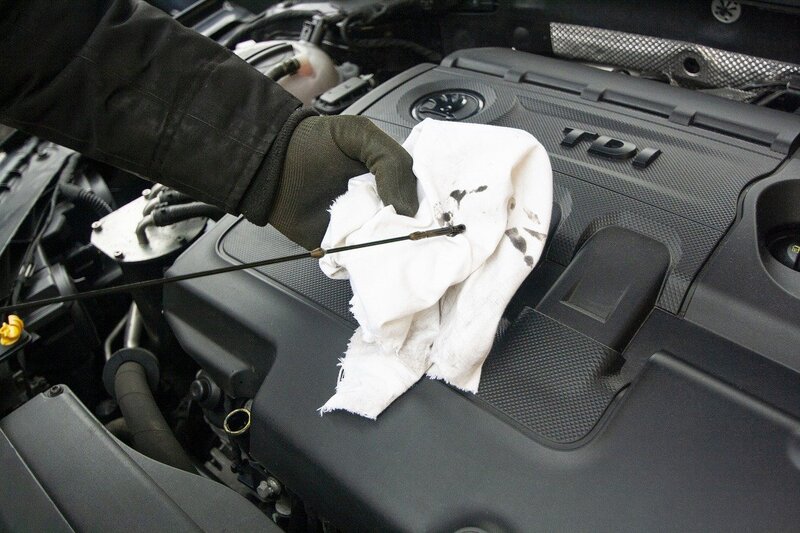A leak may cause the engine oil level to be below the recommended level. This scenario can lead to your engine running out of engine oil. In the best-case scenario, your engine would cease to function. Still, in the worst-case scenario, your engine could be damaged and need an entire overhauling process or replacement.
If you experience such a situation, will adding oil make car start?”
In this article, we will answer this question and examine other factors that could help you prevent this situation from occurring again.
Let’s get started!
Will Adding Oil Make Car Start?
If you have a low engine oil, there is a possibility that the engine would not start. Top up the engine with the required amount of oil and then try to start it. However, if you have a good engine oil level, there could be another reason why your car refused to start.
First, we must understand what happens when a car runs out of oil. A vehicle running low on engine oil can pose a significant challenge for the car owner.
The car’s engine could cease to function or get knocked. A knocked engine occurs when the moving parts in the engine weld together due to high heat caused by friction on the surfaces in contact.
If you’re lucky, the vehicle sensor will signal to your ECU that your engine oil is running low and stop the engine from functioning before it gets damaged.

Also Read: Oil in Intake Manifold (Causes & How to fix)
Can I Start My Car Without Adding Oil?
Starting your vehicle is terrible if you run low on engine oil.
If you start your vehicle on a low engine oil level, you will experience increased friction and overheating of the engine.
This action can also cause your engine to feel immediately as friction weld might or call along the piston sleeve.
Once you see the check oil indicator, you should visit a professional mechanic to get your car checked out.
How to Know When to Add Oil to a Car
Regardless, modern cars come with electronic sensors that help detect the engine oil level in your vehicle. You must also understand the symptoms of a low oil level.
Some of the symptoms of a low oil level include A drastic rise in Engine temperature, you cam also experince an increased engine speed (RPM) when idling. Lastly you many be hearing an audible grinding noise in your engine bay.
Car won’t Start After Adding Oil, Here is What to Do.
Step 1: Do Not Force a Start
You would experience various warning signs before your car shuts down due to low engine oil.
These warning indicators include clunking sound in the engine, a rising engine temperature, an increased engine RPM and the check engine light on your dashboard will illuminate.
Once your vehicle shuts down due to low oil, most parts will likely be damaged in the engine.
It is, therefore, advisable to shut down your vehicle and prevent trying to restart it forcefully.
Before your engine stops working, there should be signs that it will or may seize soon.
Step 2: Check For Low Oil Guage
The dipstick slotted into the engine bay can confirm the oil level. If you notice that the engine oil is below the low mark on the dipstick, you probably run out of oil; therefore, you should try topping up the oil in the engine with new and clean engine oil.
Next, try restarting the car. If the vehicle comes on, allow it to run for a while, then put it off. However, you might have a more complicated issue if the car refuses to start.
It is also advisable to visit your mechanic to diagnose the situation and other related issues properly.

Step 3: Remove Residual Oil From The Engine
It will help if professional mechanics do the engine oil draining process. They will better identify any underlying fault within the vehicle’s engine.
If the amount of particles within the drained oil is so little that the mechanic determines nothing is wrong with the engine, you could fix the leak that caused this problem in the first place.
Inspections would be needed to determine if the fault within the engine is dangerous when excessive metallic particles are found in the drained engine oil.
Step 3: Add Oil to the Cylinders Through the Spark Plug Channel
You must remove the spark plugs and fill the engine’s cylindrical sleeves with engine oil.
The engine oil will take a few days to seep into every part of the engine and lubricate everywhere. Once this process is done, you can fire up the engine using a breaker bar.
The need to replace the engine might not be the case for every vehicle because different models need varying procedures to troubleshoot your engine’s functionality after a sudden stop due to low engine oil.
Step 4: Manually Rotate the Crankshaft
If you experience difficulty in kick-starter to rotate the vehicle’s crankshaft, you might need to turn the crankshaft manually. You must continue rotating the crankshaft until the shaft rotates freely, freeing up every stuck component within the engine.
Rotating the crankshaft can be done with half inch socket spanner and a rod extension. If it gets too hard to date, you could also reduce the effort applied to the rod extension by increasing its length with a metallic pipe.
Step 5: Cranking is Important
As the engine gets free as you rotate the crankshaft, you can move on to manually cranking the engine. Crank the engine for about 15 seconds to distribute the engine oil to the journal bearings of the crankshaft and every other component.
Step 6: Fix Back Your Spark Plugs
Once the starts moving freely, you can re-install the spark plugs. Install the spark plugs properly, then tighten and replace the fuel tank. Next, try firing up the vehicle normally.
Step 7: Confirm Fuel Circulation Through the Engine
Always remember not to fire the engine immediately; circulate the fuel before turning on the vehicle. You can circulate the fuel throughout the fuel line by temporarily turning the car key past the ignition point. Wait about 3 mins, turn the key back off, then repeat the same action four times.
Before putting on your vehicle’s engine, make sure that every engine part is well-lubricated.
Step 8: Start The Car
Turn on your vehicle’s engine and listen closely for any distinctive sound. If any unique sound is heard, it is always wise to visit your mechanic.
If there are no weird sounds, you could move on to take your vehicle for a test drive. First, keep the car idling for about 10 minutes, then drive it around for another 10 minutes. Observe the performance of the vehicle and ensure the car runs smoothly. You could also employ the help of a friend to listen to the vehicle from the outside.
Also Read: Why Is My Car Leaking Oil? (What to Do)
Frequently Asked Questions – Will Adding Oil Make Car Start
Will the car start if the oil is low?
Your vehicle will usually not start if the engine oil is low. However, poor lubrication will progressively destroy your engine, even with a slim chance of starting the car.
Will the car shut off if there is no oil?
Most cars in modern times have electronic systems that monitor the engine oil level, and when it drops, it protects the vehicle by shutting the car down.
How long can an engine run on low oil?
Once your check engine oil indicator comes on, you will have about a week or two or about 500 miles to cover before the engine shuts down.
Conclusion – Will Adding Oil Make Car Start
The engine is the most essential system in your vehicle. The engine oil is the blood that allows the vehicle’s engine to function correctly. Therefore, an engine oil shortage is dangerous to your engine’s well-being. To avoid any problems with your engine, always check the engine oil level in your vehicle and go for routine servicing at your mechanic’s workshop.

